What is the Writing Process and Why is it Important?
At school or in everyday life, writing is extremely important. You must learn to write efficiently and effectively by using different structures and strategies.
The writing process is a series of steps for producing different types of texts. It is useful at school for descriptive, narrative or opinion texts, but can even be useful for writing an important email.
Follow the steps presented on this page to help you produce texts.
A printable version is available here.
Before writing anything, preparation is important.

A printable version is also available here.
Upon receiving a prompt, a guiding question or a given topic, you must take the time to brainstorm.
Brainstorming implies writing down pretty much everything that comes to mind about the topic at hand, you can use images, keywords, or short sentences.
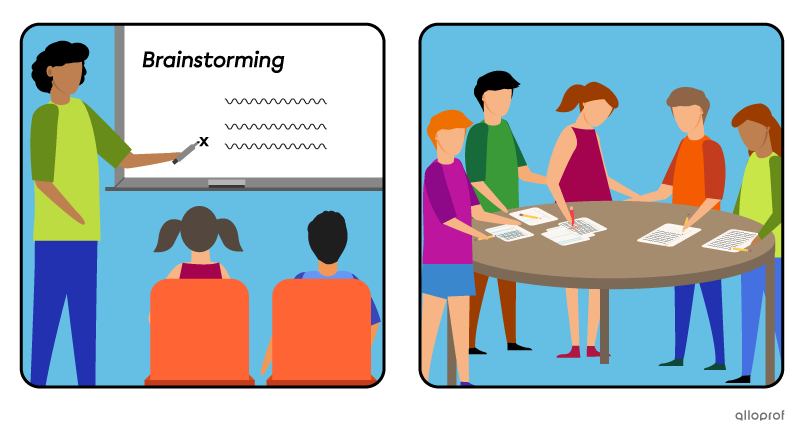
Sometimes, we don’t know enough about a topic to write about it. So, it’s important to take the time to research the subject. Use the internet, books, newspapers or any resources available to you.
Don’t forget to use note-taking strategies!

Knowing who you are writing to is important too. It will influence the way you construct your sentences and your text.
You will not write the same way when you write a letter to Canada’s Prime Minister versus one of your friends. Your tone and attitude will also be very different in a descriptive text about desert animals for elementary school compared to a research paper on nanotechnology for your PhD.

When you write, your intentions are something that cannot be overlooked.
Is your goal to make people laugh?
Do you want to inform society about an overlooked problem?
Do you want to convince someone to do something?
The intent behind your text can influence the way you write.
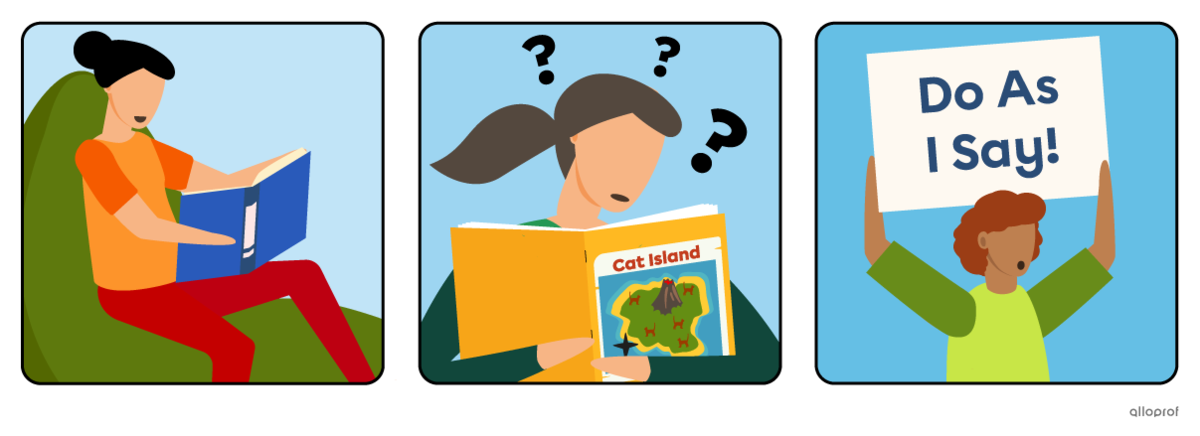
Commiting your main points to paper can help you write much easier. It will help you stay on track while you write the paragraphs in your text.
Don’t write complete sentences in your outline, use keywords or small groups of words.
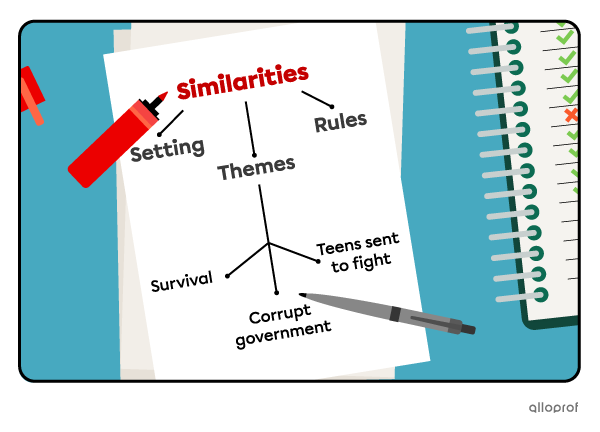
By the time you get to step 2, your ideas should be either in your head or in note form. It’s time to write a first draft.
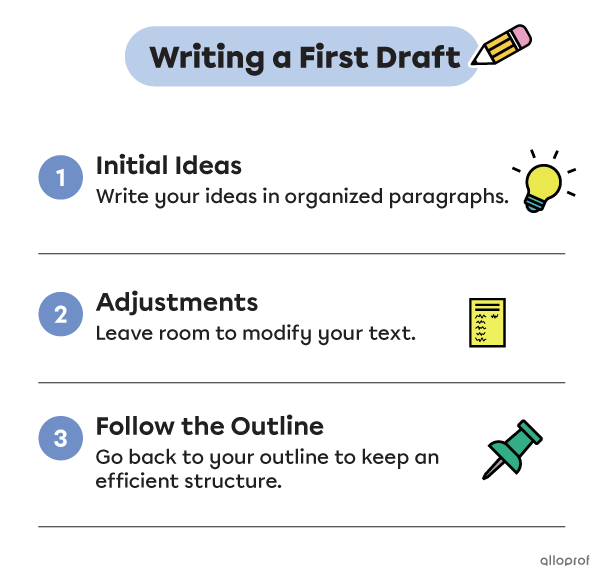
A printable version is also available here.
Depending on the type of text you want to write, structure your initial ideas into organized paragraphs.
Don’t worry too much about spelling, grammar or accuracy at this point. You must be able to write your first draft efficiently and relatively fast.
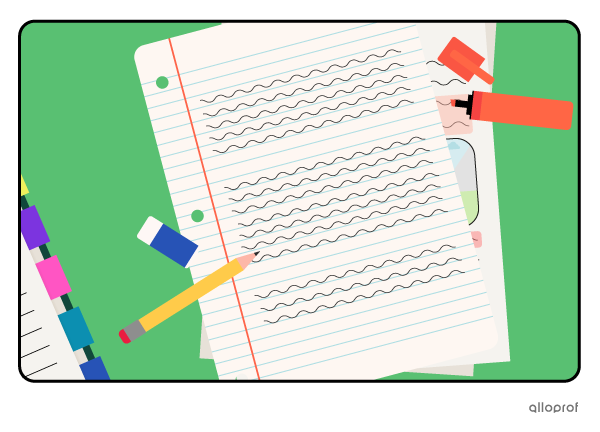
It’s important to leave room for adjustments.
Consider your first draft as a trial and error text. You must be able to cross out, underline, highlight, and change things without worrying about deleting any parts of your first draft. It’s okay to be messy.
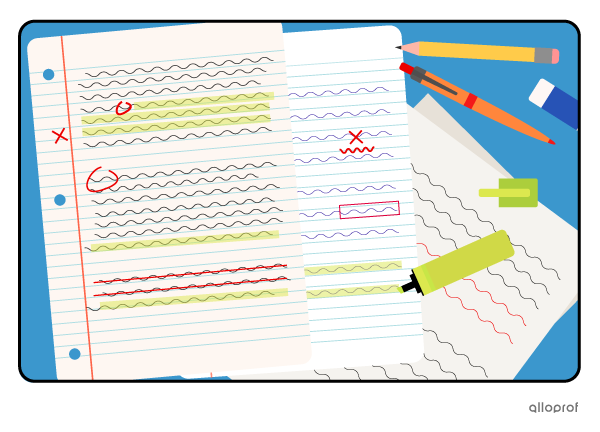
Your outline is your foundation. Following it will guarantee that you don’t get lost or wander off-topic.
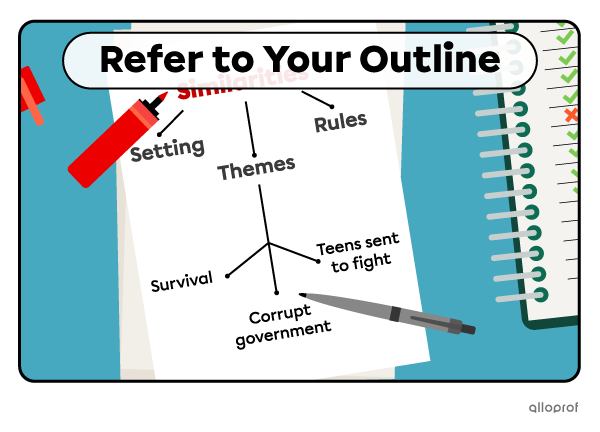
At this point, your first draft should be complete. Your text should be structured and organized. However, revising and editing the draft is part of the process. Many students skip it and they waste a precious opportunity to improve their writing.
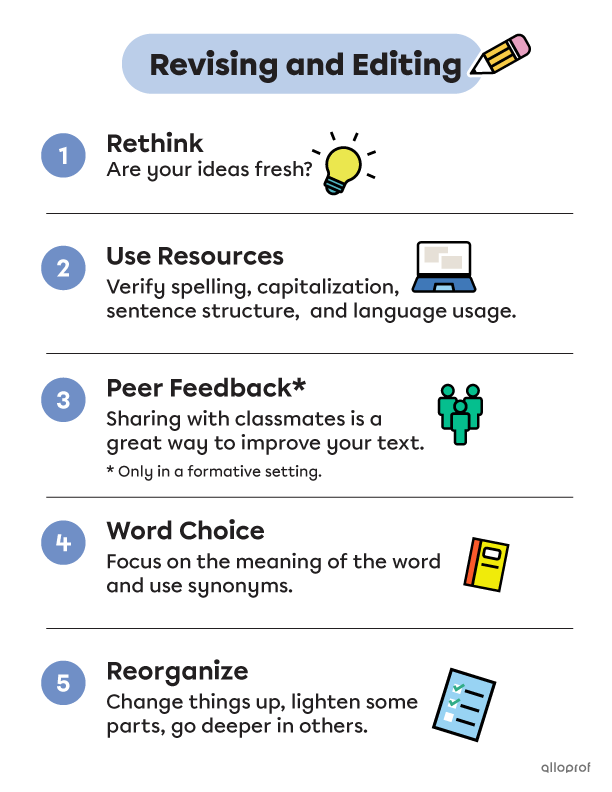
A printable version is also available here.
Ideas are never final. You should always give yourself room to rethink them and go beyond common knowledge.
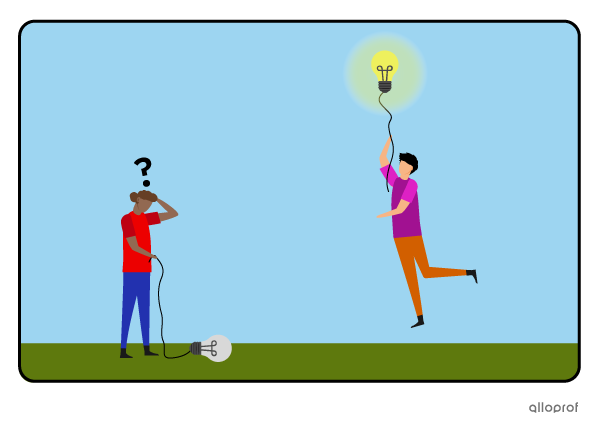
Word choice is fundamental. Revisit your text with fresh eyes and see if your vocabulary is appropriate. Focus on the meaning of the words. If you always repeat the same word, try to find a synonym.
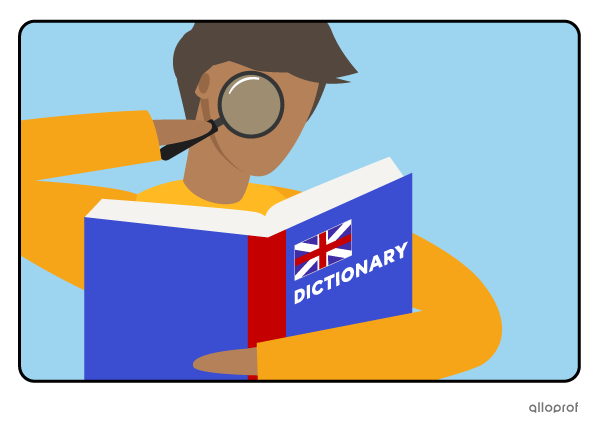
Sharing with classmates is a great way to improve your writing. Use their comments about your text to modify it.
*However, it is only possible if you’re in a formative situation. You cannot share if you’re under evaluation.
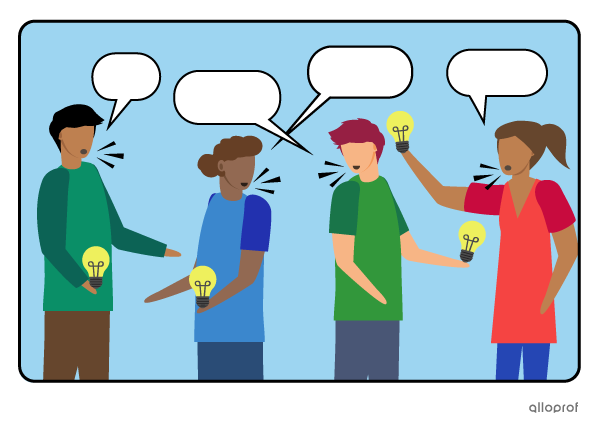
Remember when we said to leave room for adjustments? Now is the time to add, substitute, delete, change or reorganize elements in your text.
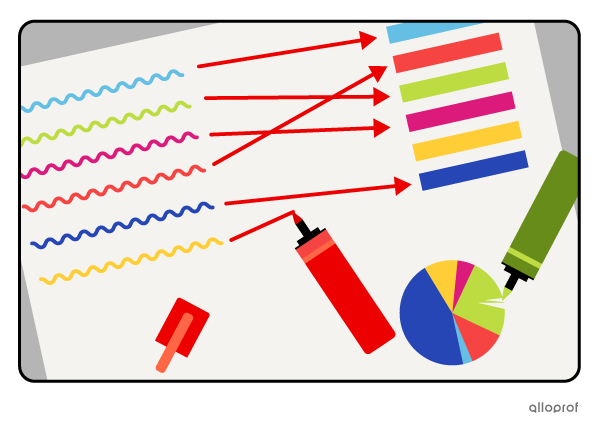
It is important to use all available resources efficiently and verify your spelling, capitalization, sentence structure and correct language usage.

The final step of the writing process is sharing your text with the world. The step is sometimes skipped, because you may not want to share everything you write.
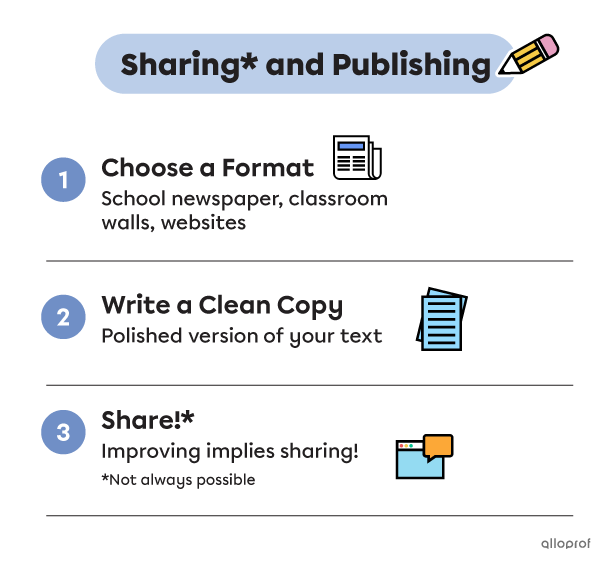
A printable version is also available here.
Presenting your text might depend on the setting. Sometimes, writing for a poster, the school newspaper, a newsletter, or an online blog is possible.
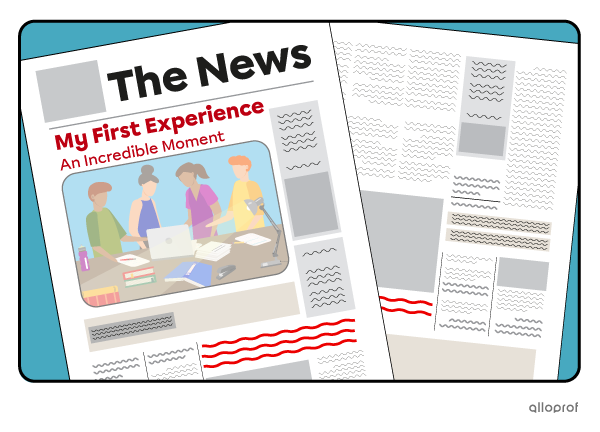
Creating a clean copy of the text is important too. You don’t want to publish an unpolished text or one that has been written on a piece of paper with scratches and arrows all over the place!
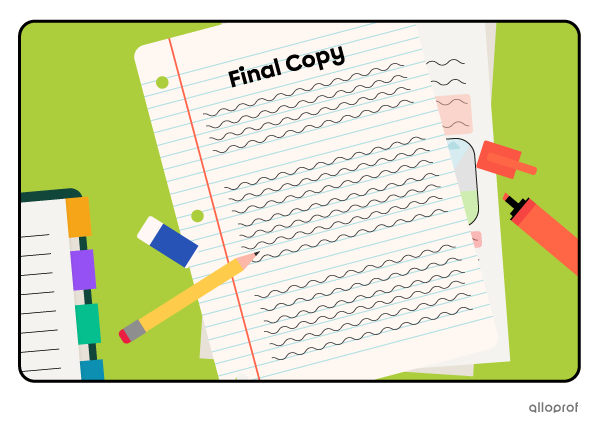
Sharing is an important part of the Writing Process. For evaluations, your teacher will probably be the only one to read and grade your text. However, most of the time, you can have different people read your writing. It’s a great opportunity to receive feedback to improve your writing and to share your message with the world!
